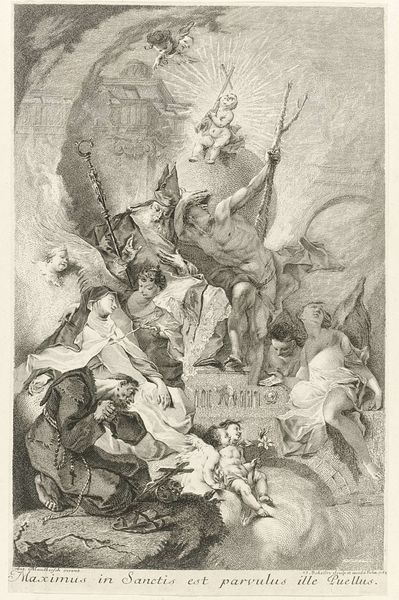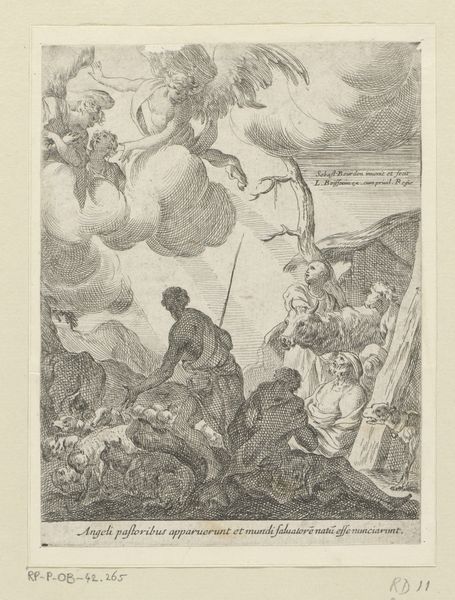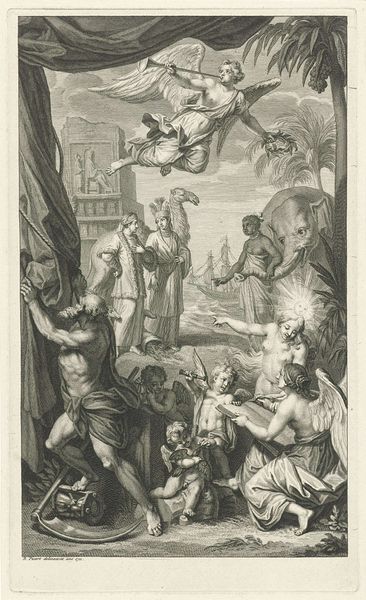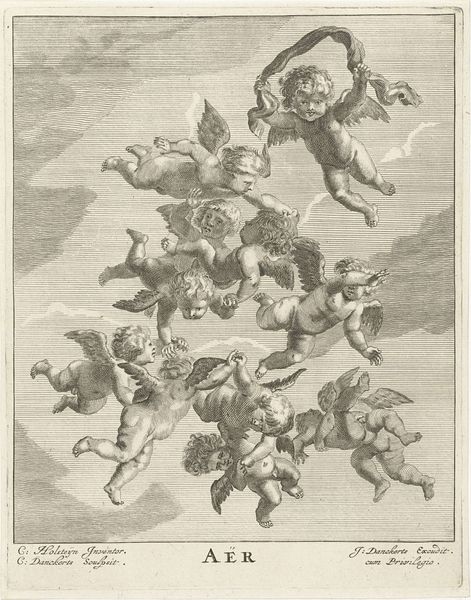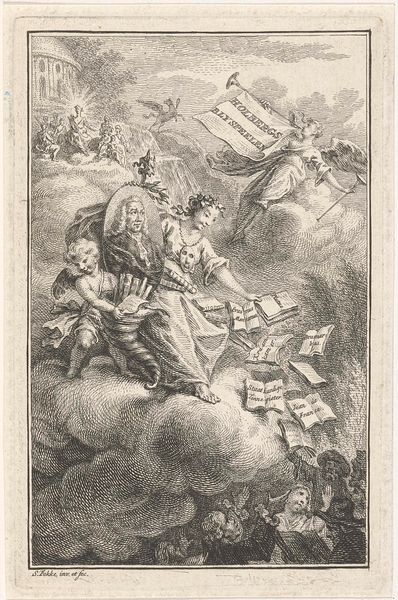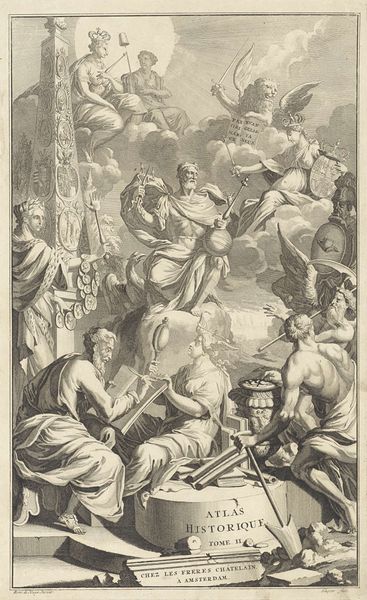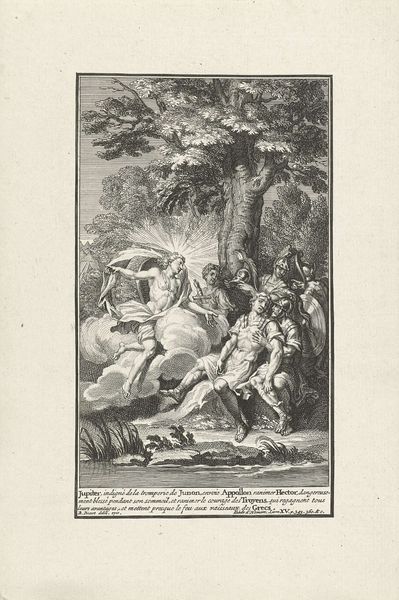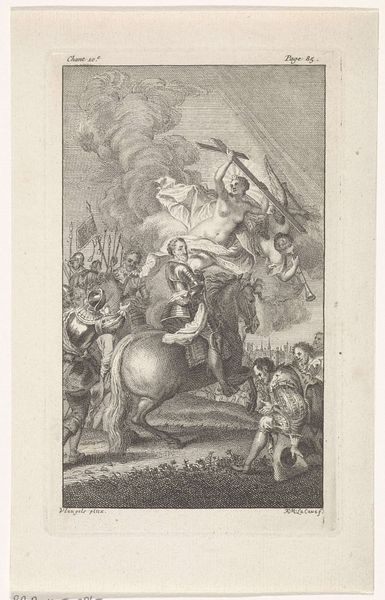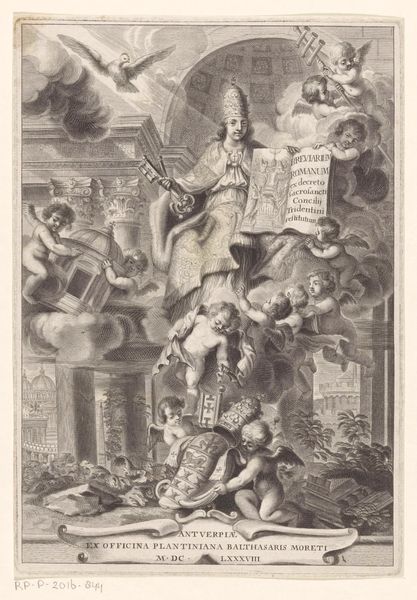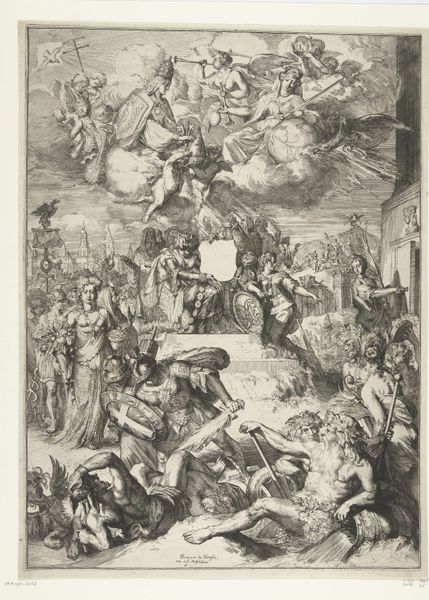
Dimensions: height 695 mm, width 470 mm
Copyright: Rijks Museum: Open Domain
Editor: This engraving, “Allegorie op de orde van het universum” by Cristoforo dall'Acqua from 1772, it's incredibly intricate. I’m immediately struck by how meticulously the composition is constructed, all these figures piled up within the frame. What jumps out to you? Curator: Indeed, the density of forms commands our attention. The baroque aesthetic favours dynamic movement and an overwhelming sensory experience. Consider the lines – how do they guide the eye? The diagonals, for instance, create tension and direct us to various focal points. Editor: I notice the figures seem to be arranged around a central sphere. What’s the sphere’s role in structuring the piece? Curator: Observe how the orb serves as both a physical and conceptual anchor. The human figures around it can be regarded as structural devices employed to establish balance within the chaotic energy of the allegorical composition. Do you agree with that assessment? Editor: I do see that now, especially how the muscular figure at the bottom appears to literally support the sphere. It’s almost like the composition is built around this gravitational pull. Is it purely visual or also conceptual? Curator: Both. By distributing pictorial weight effectively, Dall’Acqua constructs a visual language where form imitates content. Editor: That’s a great observation; I’ll be looking at compositions in a new way. Curator: As will I; you've sharpened my understanding of how the artist's organization underscores thematic complexity.
Comments
No comments
Be the first to comment and join the conversation on the ultimate creative platform.
